Fruit trees - Best species and prices
There are many advantages to having a fruit tree in your own backyard. Growing your own fruit is a great source of pride, and you’ll have access to tasty, fresh fruit of excellent quality.
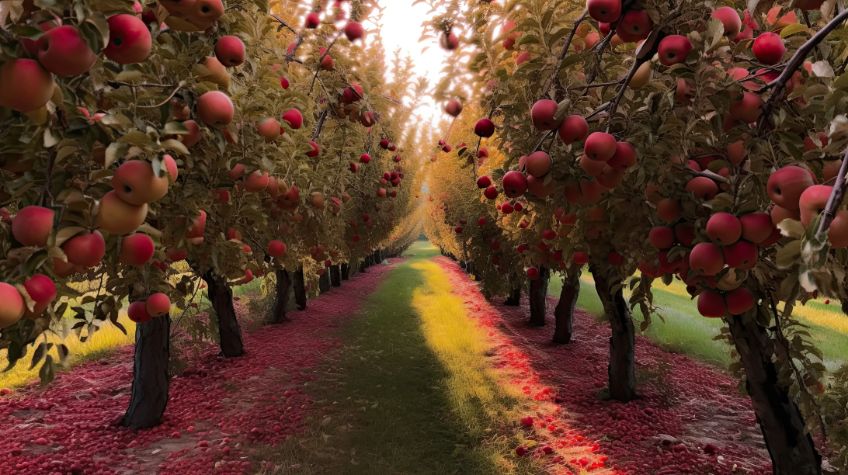
Some species of fruit trees grow very well in Quebec, despite our particular climate. Opt for a species that is hardy enough for your region to ensure that it will survive the winter.
Some species, such as avocado, banana and lemon trees, are not compatible with Quebec’s harsh winters.
Apple, pear and plum trees, on the other hand, are species that adapt perfectly to Quebec’s climatic conditions.
Let’s discover together the best species of fruit trees to plant in your garden.
Fruit trees: the best-known species
The pear tree
Different varieties of pears can be grown with ease in Quebec. Before settling on a particular species, make sure you know what conditions it needs to flourish.
If you have limited space available and can only plant one tree, you’ll need to opt for a species that is self-fertile, i.e. able to pollinate itself.
Self-sterile species, on the other hand, require the presence of another pear cultivar nearby to ensure pollination and fruit harvesting.
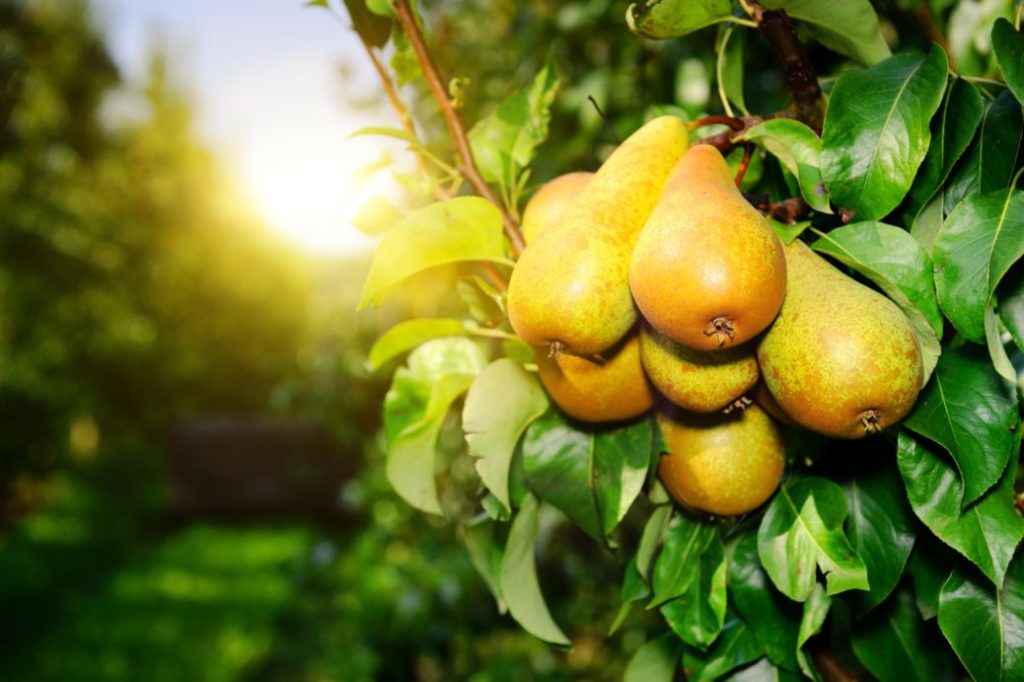
Sunlight is of vital importance to the proper growth of a fruit tree.
Generally speaking, pear trees need full sunlight for optimum growth. The height of a mature pear tree is usually 10 meters.
Harvesting and storage
Pears can be harvested from mid-August to September. Some of the latest species will be grown at the end of September.
It’s best to pick them when they’re not fully ripe, as they don’t ripen well on the tree, ripening from the inside out.
A few days or even weeks after picking, the pear tends to become softer, juicier and tastier.
Shelf life varies from one species to another: while some, like Krazulya, can be kept for only one or two weeks after harvesting, others, like Southworth, can be kept until February.
Did you know that?
A pear tree can live up to 200 years!
|
Best pear tree species |
||||||
|
Variety |
Years before fruiting |
Pollination |
Harvest |
Conservation |
Hardiness zone |
|
|
Nova |
7 years |
Self-fertilizing |
Mid-September |
A few weeks |
4 |
|
|
Julienne |
7 years |
Self-fertilizing |
Mid to late September |
4 months |
3 |
|
|
Krazulya |
4 to 5 years |
Self-sterilizing |
Mid to late August |
1 to 2 weeks |
3a |
|
|
Southworth |
7 years |
Self-fertilizing |
Early September |
1 month |
3 |
|
|
Patten |
7 years |
Self-sterilizing |
Late September |
3 months |
3 |
|
|
Lorraine |
7 years |
Self-fertilizing |
Early September |
1 month |
4 |
|
The apple tree
It’s no secret! Apples grow very well in Quebec, making them ideal for home cultivation.
The apple tree prefers full sun. Make sure you find an ideal spot for it to grow and produce. At maturity, apple trees reach a height of 7 metres.
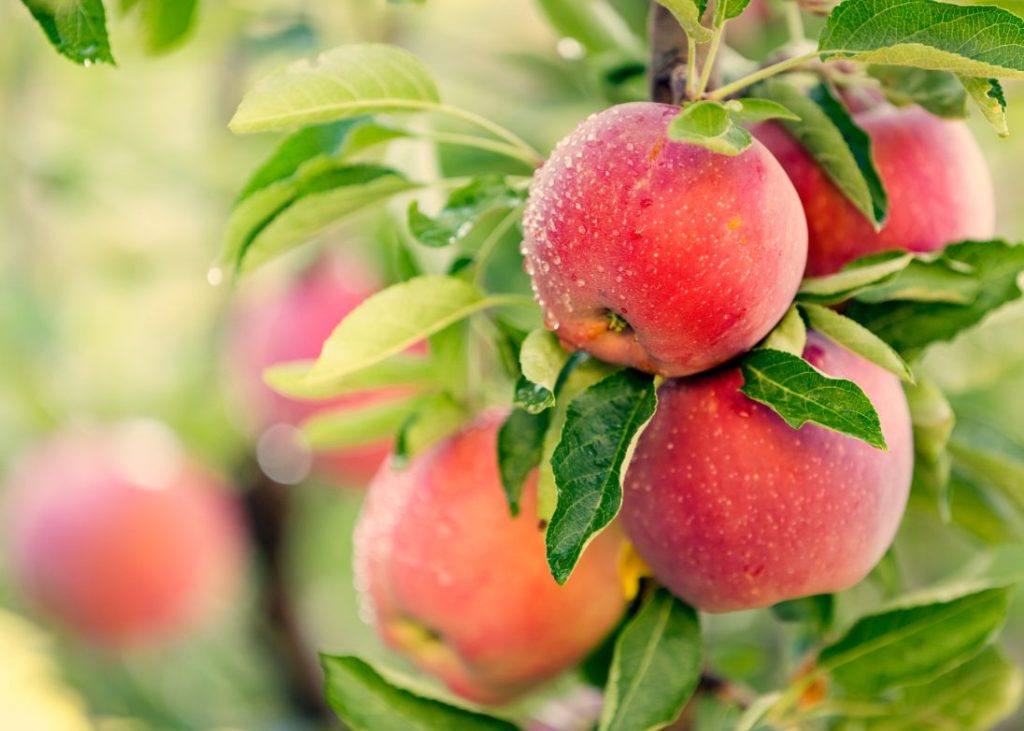
Even if the apple tree is self-fertile, it will always offer better production if accompanied by an apple tree of another variety.
For example, September Ruby and Sweet Sixteen are self-fertile, but will produce higher yield s if they are close to a pollinator.
Harvesting and storage
Apples can be harvested from mid-August to the end of October.
While it’s best to harvest some species without delay to avoid softening, as is the case with Railroad, some species, such as Collet, gain in flavor after a period of frost, so don’t harvest them too early.
Many varieties can be stored in a cool place for several months and will still be delicious to bite into.
Other apples have a poor shelf life and tend to soften quickly if left on the tree too long, or if not eaten quickly after picking.
So it’s best to process them before they go bad. Juices, compotes, pies and croustades are some of Quebec’s favorite ways to transform them.
Did you know that?
An apple tree can live for over 100 years!
|
Best apple tree species |
|||||
|
Variety |
Years before fruiting |
Pollination |
Harvest |
Conservation |
Hardiness zone |
|
9-22 End |
5 years |
Self-fertilizing |
Mid-September |
Low |
1 |
|
Collet |
3 to 4 years |
Self-sterilizing |
Late September to mid-October |
10 weeks |
3b |
|
Fall Red |
5 years |
Self-fertilizing |
Mid to late September |
3 months |
2 |
|
Goodland |
3 years |
Self-fertilizing |
Mid to late August |
4 to 5 months |
3 |
|
Railroad |
5 years |
Self-fertilizing |
Mid to late September |
Low |
4 |
|
September Ruby |
4 to 5 years |
Self-fertilizing |
Early to mid-September |
4 to 5 months |
2a |
|
Sweet Sixteen |
5 years |
Self-fertilizing |
Early to late October |
4 to 5 months |
3b |
The plum tree
Plum trees don’t just give you tasty fruit when you pick them. At flowering time, around mid-May, you’ll witness a spectacular bloom that will please your eyes as much as your nose.
Indeed, the pretty, fragrant white flowers are splendid and will give you a second reason for wanting to plant plum trees in your yard.
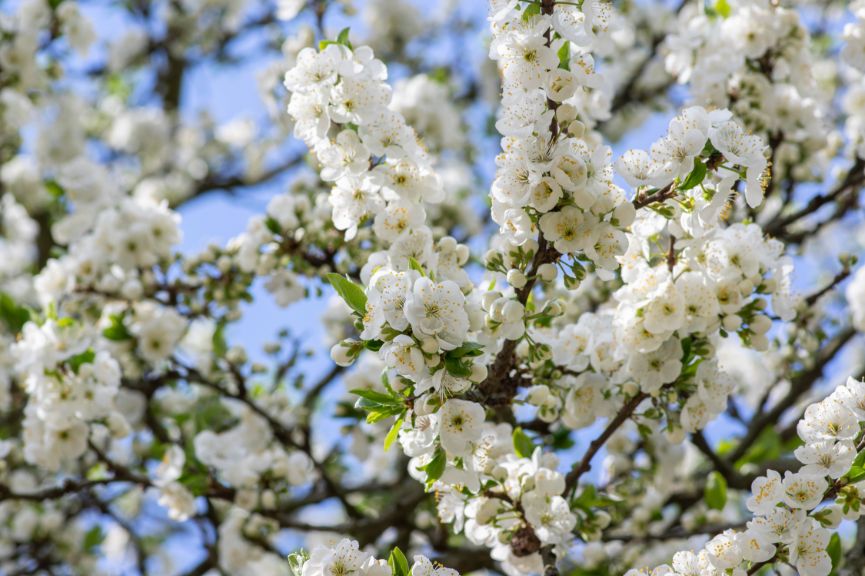
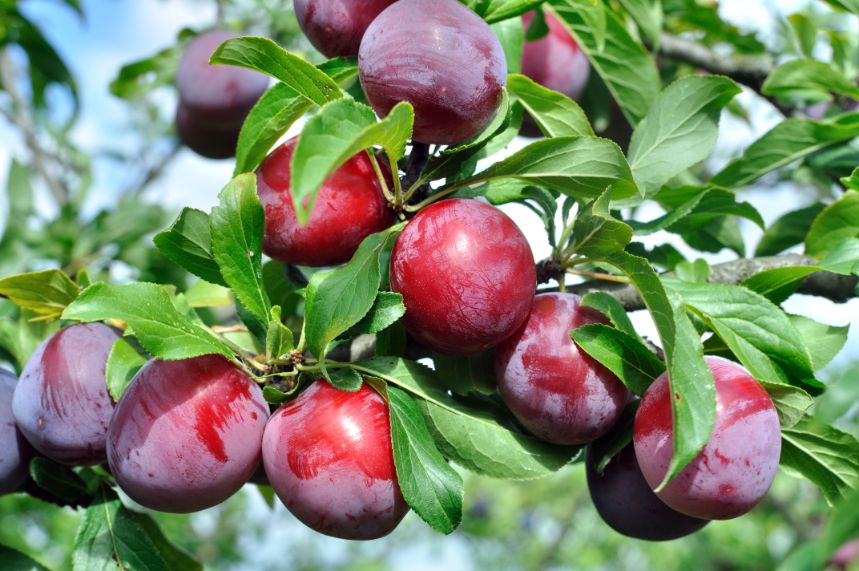
Unlike apples and pears, plums are smaller trees. Height at maturity varies between 3 and 5 meters, depending on the variety.
Like the fruit trees mentioned above, plum trees need full sun to develop properly.
As most plum trees are hybrid species, it will be necessary to plant a black plum or American plum to ensure pollination and fruit production. But since the plum is a smaller fruit tree, it’s easier to plant another species on your land without feeling overrun.
Harvesting and storage
Plums are an early fruit, harvested from August to September.
Delicious to eat when freshly picked, you’ll need to allow for some processing because it’s a fruit with a short shelf life. The Alderman variety has a slightly longer shelf life, but even so, you’ll need to process it to avoid losing your crop.
Think about cooking them in compote, jelly, jam or even syrup.
|
Best plum species |
|||||
|
Variety |
Years before fruiting |
Pollination |
Harvest |
Conservation |
Hardiness zone |
|
Alderman |
2 to 4 years |
Self-sterilizing* |
Late August |
Low |
4 |
|
American |
5 to 6 years |
Self-fertilizing |
August |
Low |
2 |
|
Brookgold |
6 years |
Self-sterilizing* |
Mid-August |
Low |
2b |
|
Grenville |
6 years |
Self-sterilizing* |
Mid-August to early September |
Low |
3 |
|
Hardygold |
3 to 5 years |
Self-sterilizing* |
Mid-August |
Low |
3 |
|
Black plum |
3 to 6 years |
Self-fertilizing |
Late August |
Low |
2 |
|
Patterson |
3 to 5 years |
Self-sterilizing* |
Late August to early September |
Low |
2b |
*To ensure fruit production, these hybrid varieties need to be located close to black plums or American plums, which are excellent pollinators.
Fruit trees: lesser-known species
Serviceberry
The serviceberry is a small tree that reaches 4 meters at maturity. It produces dark-blue berries similar to blueberries.
Fruit can be eaten raw, but you can also process it in a variety of ways. You can use them in desserts such as pies, muffins and brioches, or transform them into jelly.
To make sure you can harvest the fruit, you’ll need to protect it from birds, which are fond of the berries and may well steal your crop.
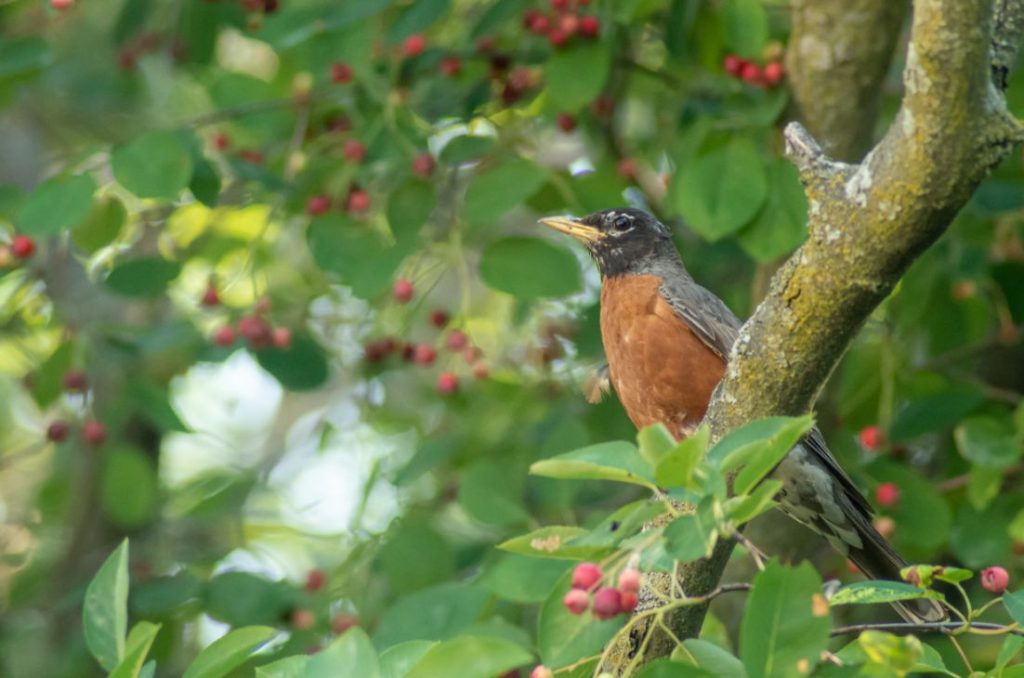
You’ll need to protect the branches with nets. After flowering, place the nets on the tree if it’s still small, or on the branches once the tree has reached full maturity.
The saskatoon is an adaptable tree, so it can grow in full sun or part shade.
Aronia
Aronia is a shrub that produces small black fruits, also similar to blueberries. The maximum height of this shrub is 1.5 metres. It can be planted in full sun or part shade.
However, their rather distinctive taste is not appreciated by all: strong astringency, slightly sweet and slightly acidic. If you’re the type to enjoy dark chocolate, you’ll be more inclined to appreciate the taste of this berry.
Alternatively, you can turn it into jam and jelly or juice, mixed with other fruits.
The camerisier
The camerise is a small fruit that has been gaining in popularity in Quebec in recent years. It can be eaten as is or cooked in the same way as blueberries.
The mature shrub reaches a height of 2.4 meters. As it is a self-sterile species, it should be planted close to a cultivar with the same flowering period, to ensure pollination and the appearance of fruit.
It prefers to be planted in full sun, although it can tolerate a semi-shaded spot.
Blackcurrant
Blackcurrants, the fruit of the blackcurrant bush, are known for turning into delicious blackcurrant liqueur. It’s a small, sweet fruit that can be eaten as is, or made into jam or jelly.
The shrub can be planted in semi-shade or full sun, but does not tolerate heat very well. It will reach a height of 1.8 metres and can tolerate extreme cold, down to -42 degrees Celsius!
That’s why this fruit-bearing shrub can survive Quebec’s harsh winters.
Quince tree
The quince, whose fruit is the quince, is a shrub that prefers full sun and will reach 2 to 3 meters when mature. It blooms beautifully in May.
Although self-fertile, quince will produce more efficiently through cross-pollination.
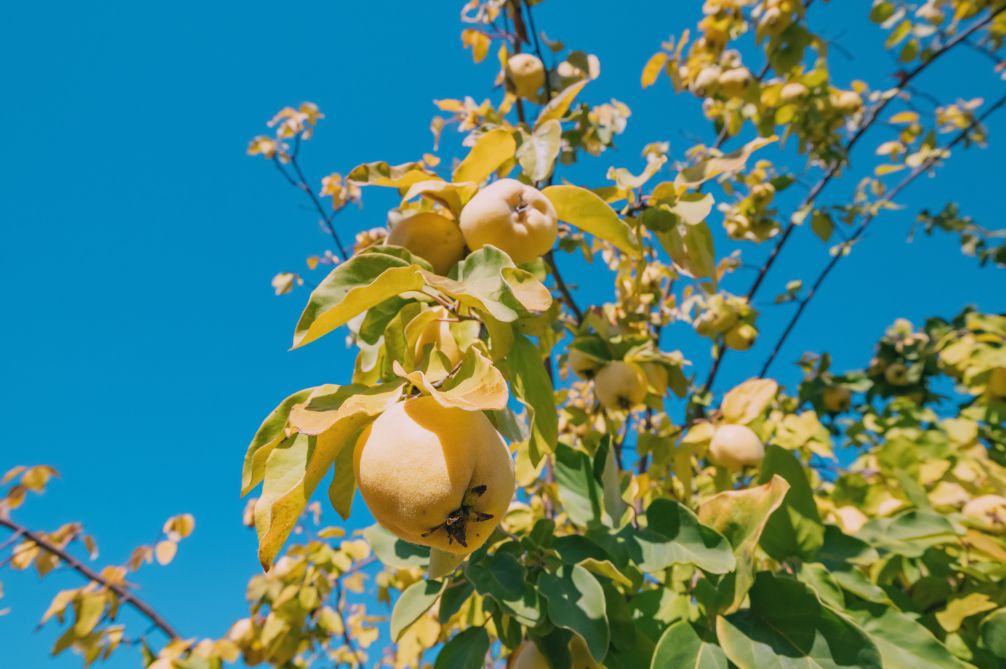
Quince has a rather bitter taste when raw, but cooked, it will add a tropical flavor to your meals.
It has a delicious aroma and is a fruit of choice for jams and jellies, since it contains pectin, which facilitates solidification.
|
Fruit trees: little-known species |
|||||
|
Variety |
Price |
Years before fruiting |
Pollination |
Harvest |
Hardiness zone |
|
Serviceberry |
30$ à 35$ |
3 years |
Self-fertilizing |
July to August |
1a |
|
Aronie |
22$ to 27$ |
3 years |
Self-fertilizing |
Late August to early October |
3 |
|
Camerisier |
15$ to 32$ |
2 years |
Self-sterilizing |
July to August |
2a |
|
Blackcurrant |
22$ to 33$ |
2 years |
Self-fertilizing |
Mid to late July |
3a |
|
Cognassier |
20$ to 30$ |
3 to 4 years |
Self-fertilizing |
Mid to late October |
5 |
Fruit tree price
The price of a fruit tree will depend on its size at the time of purchase. You can buy a tree 30 to 60 cm tall for as little as $36.
A 60-90 cm tree will cost approximately $41. And a 90-150 cm tree could cost $46.
If you wish to buy a larger tree, over 150 cm, the price could vary between $80 and $180.
Shrub prices can also vary according to size. You’ll generally buy them smaller: from 30 cm up to around 90 cm. You can buy fruit bushes for between $15 and $35.
|
Price of a fruit tree |
|
|
Height |
Price |
|
30 to 60 cm |
36$ |
|
60 to 90 cm |
41$ |
|
90 to 150 cm |
46$ |
|
150 cm and over |
80 and more |
Before you buy a fruit tree, make sure youget the best advice on how to care for it. Some nurseries even specialize in species that are growing well in Quebec.
Fruit trees: maintenance and inspection
To make sure your newly acquired fruit tree stays in good health, it’s essential to maintain and care for it.
Inspect it! You can carry out the
health inspection
yourself, or have a specialist come to your home to take a look at the situation.
If you notice a problem during your inspection, contact a professional immediately. A certified arborist can advise you on how to care for your fruit tree to ensure its growth and production.
By filling in the form on this page, you’ll receive 3 free, no-obligation quotes.
Whether it’s a simple inspection or the pruning of your fruit tree, 3 experts will contact you to offer you the best price for their professional services.
Find your expert now by filling in our form! It’s fast and free!
Ask for your quotes.







